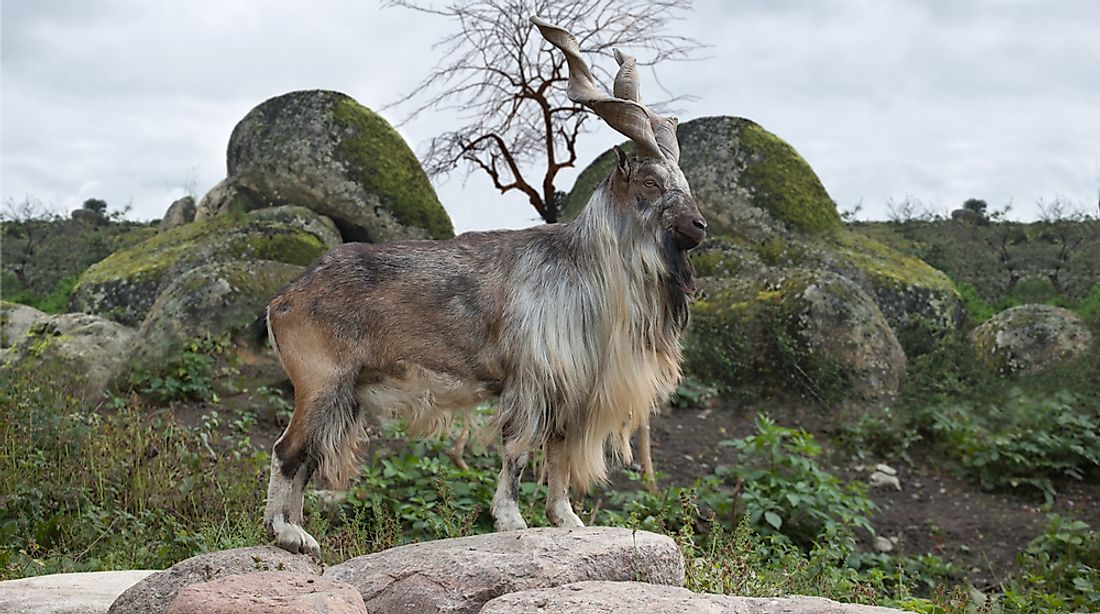What is the National Animal of Pakistan?

There are several ways in which a country can show its character, belief, and values. The most popular symbols used are the national flag, Coat of Arms, and other important places within the country. Animals and birds are also used throughout the world to bring out the characteristics that a country believes it possesses. For example, the US uses the bald eagle to represent its supreme power and authority. The national animal reveals a lot about a country and countries without animals often do not show the world what is important to them. Pakistan is one of the countries that have adopted an animal to symbolize its characteristics. The national animal of Pakistan is the Markhor.
About the Markhor
The Markhor was selected as the national animal of Pakistan because of its ability to endure the mountainous region and its widespread appearance throughout the country. Markhor is a wild goat species commonly found in Afghanistan, Pakistan, India, Tajikistan, and Uzbekistan. It was initially listed as endangered by the IUCN but was later listed as Near Threatened in 2015 because its population has increased by approximately 20% in the last year. The name is derived from two Persian words, “Mar” and “Khor” meaning “snake” and “eater” respectively. The name may have been given to the species because of its ability snake or its screw-like horns that resemble a coiling snake.
There are several sub-species of markhor based on the shapes of their horns and the twisting pattern. Some of the sub-species include Astor markhor with large flat horns, Kabul markhor with a slight corkscrewed horns, and Bhukharan markhor. The age of a markhor can easily be determined by counting the number rings on the horn.
Description
An adult markhor ranges from 26-45 inches in height at the shoulder and is 52-73 inches long. It weighs 71-243 pounds. Its coat is brown to black in color. During summer, the coat becomes short and smooth but grows thicker and longer in winter. The lower parts of the legs have white and black fur. The male markhor has longer hair on the chest, chin, shank, and throat while the female is redder in color with shorter hair. Both the male and the female have corkscrew-like horns that join at the head but spread outwards. Males’ horns can grow up to 63 inches long while those of the female can grow up to 10 inches.
Behavior
Markhors mainly inhabit the mountainous regions and can inhabit between 1,965 and 11,810 feet in elevation. The species are diurnal and are active mainly in the morning and evening. They graze or browse while standing on hind legs in order to access the high branches. The male markhors fight by lunging and locking of horns. They live as a flock, mainly composed of nine animals including females and their little ones. The adult male markhors are largely solitary. The species has an alarm call that closely resembles that of a bleating domestic goat. While chewing a cud, markhor foams on the mouth, especially after eating a snake. The locals believe that this foam can be used to extract poison from snakebite.











